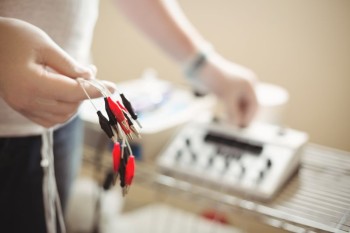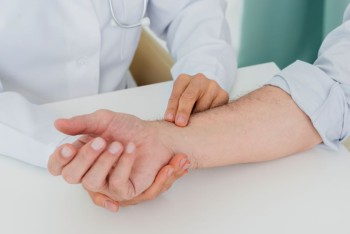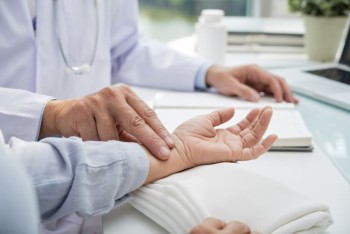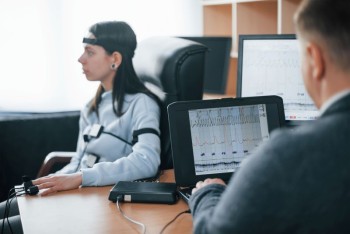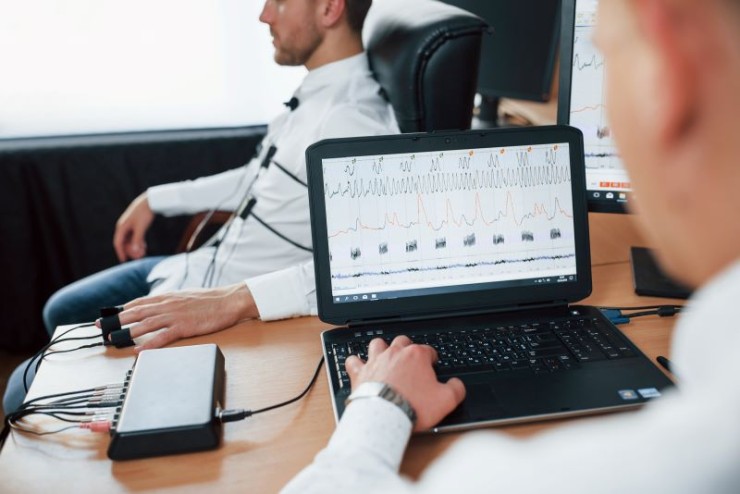
Electromyography (EMG) stands as a valuable diagnostic tool, offering insights into the electrical activity of muscles and nerves in both upper and lower limbs.
EMG NCV Upper or Lower Limbs in India with Cost
Electromyography (EMG) NCV Upper or Lower Limbs in
Detail
Introduction to Electromyography (EMG) in Limb Assessment
The assessment of muscle and nerve activity is crucial for diagnosing and managing various neurological and muscular conditions. Electromyography (EMG) stands as a valuable diagnostic tool, offering insights into the electrical activity of muscles and nerves in both upper and lower limbs.
Purpose of EMG in Limb
Assessment
EMG serves a dual purpose in limb assessments, aiding in the diagnosis of both muscle and nerve disorders. It provides essential information about neuromuscular function, enabling healthcare professionals to pinpoint issues affecting the upper and lower limbs.
Principles of EMG in Limb Assessment
The principles of EMG involve the recording of electrical activity in muscles. By placing electrodes on the skin or using needle electrodes inserted into muscles, EMG captures the signals generated by muscle fibers. Analyzing these signals helps differentiate between normal and abnormal muscle function, offering insights into the health of upper and lower limb muscles.
Equipment Used in EMG Limb Assessments
EMG assessments utilize specialized equipment, including EMG electrodes and amplifiers. The choice between surface EMG and needle EMG depends on the specific requirements of the assessment. Precise and high-quality equipment is crucial for obtaining accurate recordings of muscle activity in upper and lower limbs.
Procedure for EMG Limb Assessments
The procedure for EMG limb assessments involves careful patient positioning to evaluate both upper and lower limbs separately. Depending on the type of EMG (surface or needle), electrodes are placed on the skin or inserted into specific muscles. The test records the electrical activity during muscle contraction and at rest, providing a comprehensive evaluation of muscle function.
Interpretation of EMG Results in Limb Assessments
Interpreting EMG results in limb assessments requires analyzing normal and abnormal muscle activity patterns. Deviations from the expected patterns can indicate muscle or nerve disorders, aiding healthcare professionals in identifying and understanding the nature of conditions affecting the upper and lower limbs.
Applications of EMG in Limb Assessments
EMG has diverse applications in diagnosing conditions such as muscular dystrophy in the upper limbs and detecting sciatic nerve issues in the lower limbs. The information obtained through EMG assessments contributes to precise diagnosis and tailored treatment plans for conditions impacting muscle and nerve functionality in both upper and lower limbs.
Types of EMG Tests for Limb Assessment
There are two primary types of EMG tests for upper and lower limb assessments: Surface EMG and Needle EMG. Surface EMG involves placing electrodes on the skin to capture muscle activity, while Needle EMG uses fine needles inserted into specific muscles for a more detailed evaluation. Both types provide valuable information about muscle function in the upper and lower limbs.
EMG in Neurology for
Limb Disorders
In neurology, EMG plays a crucial role in diagnosing and monitoring neurological conditions affecting upper and lower limbs. The results contribute to treatment planning, helping healthcare professionals develop strategies to manage conditions impacting both muscle and nerve functionality in these regions.
Comparative Analysis with Other Muscle and Nerve Assessment Techniques in Limb Assessments
Comparing EMG with other muscle and nerve assessment techniques like Nerve Conduction Velocity (NCV)/Nerve Conduction Study (NCS) and imaging studies helps healthcare professionals understand the strengths and limitations of each method. EMG provides focused insights into muscle activity in upper and lower limbs, complementing the broader perspectives offered by other tests.
Challenges and Considerations in Conducting EMG Limb Assessments
Several factors can influence the accuracy of EMG limb assessments, including patient cooperation, body temperature, and the presence of certain medications. Addressing these challenges is crucial for obtaining reliable and clinically relevant results in the evaluation of upper and lower limb muscles.
Recent Technological Advancements in EMG Limb Assessments
Recent technological advancements in EMG limb assessments include innovations in electrode design, signal processing algorithms, and improved amplifiers. These developments enhance the efficiency of tests, contributing to a more comfortable patient experience during upper and lower limb evaluations.
Future Trends in EMG Technology for Limb Assessments
The future of EMG technology for limb assessments is anticipated to witness advancements in both methodology and technology. Predicted developments include integration with artificial intelligence for data analysis, miniaturization of equipment, and advancements in telemedicine applications, reshaping the landscape of upper and lower limb assessments.
Case Studies Demonstrating EMG Success in Limb Assessments
Real-world case studies demonstrate the success of EMG in diagnosing and managing various conditions affecting upper and lower limbs. These cases showcase the versatility and accuracy of EMG in providing actionable insights for healthcare professionals, leading to effective treatment strategies.
Patient Preparation for EMG Limb Assessments
Patients undergoing EMG tests for limb assessments should be informed about the procedure and any necessary preparations. This includes guidelines specific to upper and lower limb assessments, addressing common concerns, and ensuring a comfortable testing experience for patients undergoing evaluation.
Conclusion
In conclusion, Electromyography (EMG) emerges as a pivotal tool in the comprehensive assessment of muscle and nerve functionality in both upper and lower limbs. Its applications in neurology, orthopedics, and beyond contribute to tailored treatment plans, emphasizing its essential role in modern medical diagnostics.
FAQs About Electromyography (EMG)
Is EMG testing painful for upper and lower limbs?
EMG
testing is generally well-tolerated and minimally uncomfortable for both upper
and lower limbs. Patients may feel a brief, mild electrical sensation during
the test.
How long does an EMG test for upper and lower limbs typically take?
The duration of an EMG test for upper and lower limbs depends on the specific muscles being evaluated, but it usually ranges from 30 minutes to an hour.
Can EMG tests diagnose conditions other than muscle and nerve disorders
for upper and lower limbs?
While EMG is primarily used for muscle and nerve-related conditions, it can also provide insights into certain neurological disorders, contributing to a comprehensive diagnostic assessment for both upper and lower limbs.
Are there any risks associated with EMG tests for upper and lower limbs?
EMG tests for upper and lower limbs are generally safe, with minimal risks. Some patients may experience mild discomfort or skin irritation at the electrode sites.
How should I prepare for an EMG test for upper or lower limbs?
Preparation for an EMG test involves wearing loose and comfortable clothing, informing the healthcare provider about any medications being taken, and discussing any concerns or pre-existing conditions that might affect the test.
Can EMG be performed on children or elderly individuals for upper or
lower limbs?
Yes, EMG can be performed on individuals of different age groups, including children and the elderly. The procedure is adjusted based on the patient's age and health condition.
What conditions can EMG help diagnose in the upper limbs?
EMG is valuable in diagnosing various conditions in the upper limbs, including but not limited to carpal tunnel syndrome, brachial plexopathy, and muscle disorders such as myopathies.
What conditions can EMG help diagnose in the lower limbs?
EMG is useful in diagnosing conditions affecting the lower limbs, such as sciatic nerve issues, lumbar radiculopathy, and disorders impacting the muscles and nerves in the lower extremities.
Are there any side effects after undergoing an EMG test for upper or
lower limbs?
Generally, there are no significant side effects after an EMG test. Some individuals may experience mild soreness or bruising at the electrode insertion sites, but these effects are temporary.
Can EMG be performed during pregnancy for upper or lower limbs?
EMG is generally considered safe during pregnancy, especially when medically necessary. However, it's essential to inform the healthcare provider about the pregnancy, and adjustments may be made to ensure the safety of both the mother and the baby.
How often should EMG tests be repeated for upper or lower limbs?
The frequency of EMG tests depends on the specific medical condition and the recommendations of the healthcare provider. In some cases, periodic EMG assessments may be necessary to monitor changes in muscle and nerve function.
Can EMG be used to assess sports-related injuries in upper or lower
limbs?
Yes, EMG can be utilized to assess and diagnose sports-related injuries affecting the muscles and nerves in both upper and lower limbs. It provides valuable information for developing rehabilitation plans.
(0)
Login to continue
